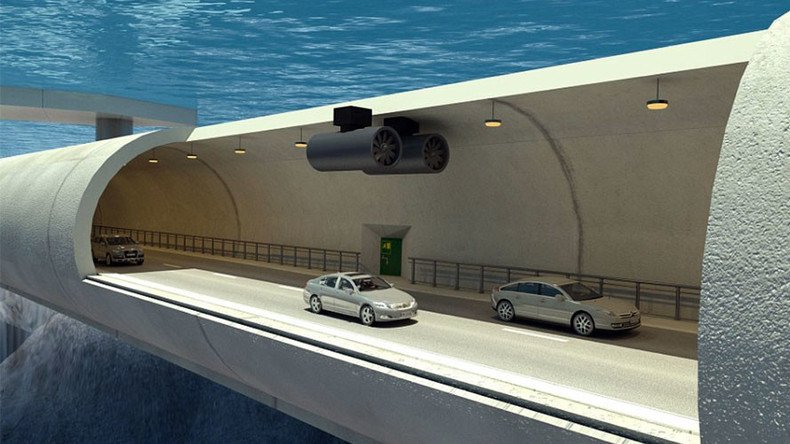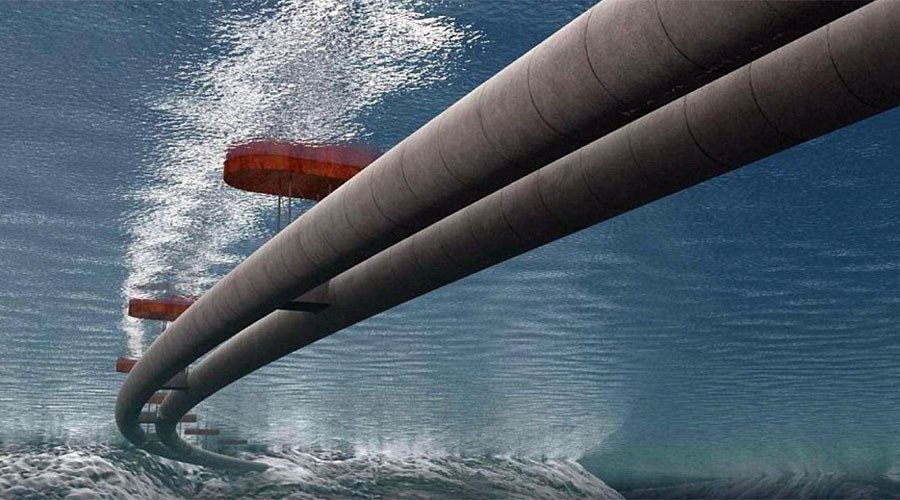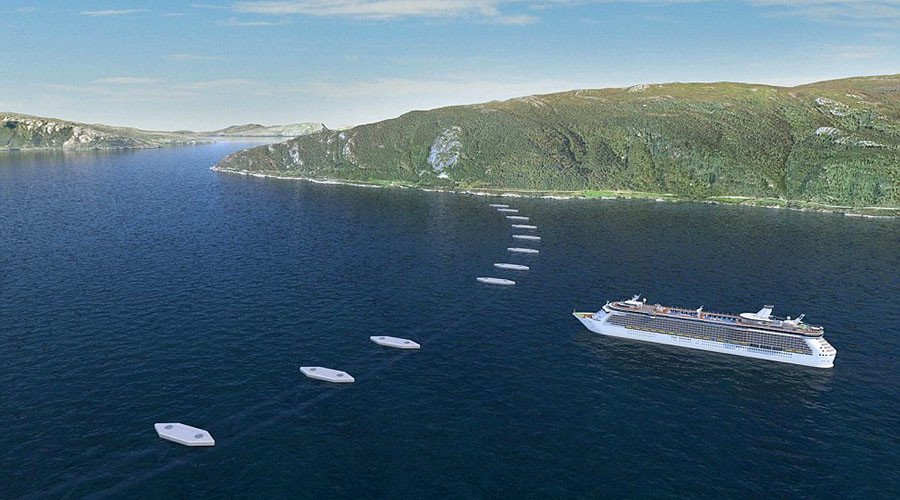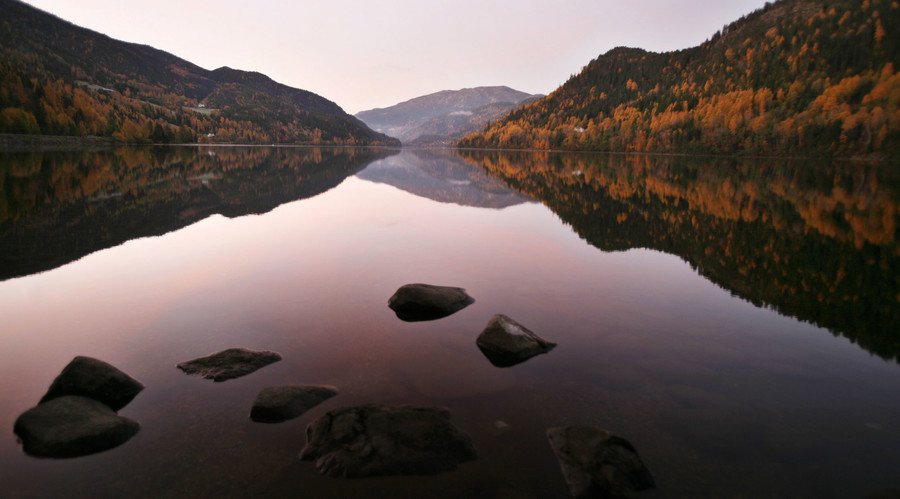Norway to create world’s first floating underwater tunnel (VIDEO)

The Norwegian coast may be beautiful but with more than a thousand fjords cutting into it, getting from one place to another often requires lengthy journeys.
Norway’s Public Roads Administration (NPRA) has an ambitious plan to solve the problem by building the world’s first floating submerged tunnel system about 30 meters (100ft) underwater.

The $25 billion project will allow vehicles to travel under the Norwegian Sea avoiding a 21-hour drive along the coastline.
The route from the southern city of Kristiansand to Trondheim in the north currently includes seven ferry crossings. As most of the waterways are wide with the largest a mile deep, it is not feasible to construct a traditional bridge. The tunnel would shorten the trip to just over 10 hours.
The first-of-its kind structure will be made up of two 1,200 meter (4,000ft) curved concrete tubes, floating up to 30 meters (100ft) below the surface. The tubes will be supported by pontoons on the surface and kept stable with connecting trusses. For extra stability, the construction might be bolted to the bedrock as well.
On the surface, there would be wide gaps between the pontoons to allow ferries to pass through.

The first underwater tunnel will connect Oppedal and Lavik, passing through the 1,300 meter (4,300ft) deep, 1,000 meter (3,300ft) wide Sognefjord.
Traveling along the new route would feel like driving through any other tunnel, according to Arianna Minoretti, a senior engineer with the NPRA.

The submerged construction will be able to cope with rough weather that is typical for the country, according to NPRA. It will also allow easier access to rural communities.
“Having this connection means that people there do not have to wait for a helicopter to go to the hospital,” Minoretti says.
The project is planned to be completed by 2035, and will preserve the landscape for those who still want to take the scenic route, the agency says.












